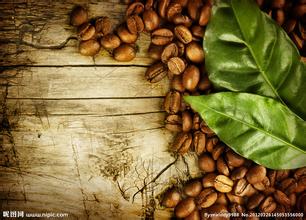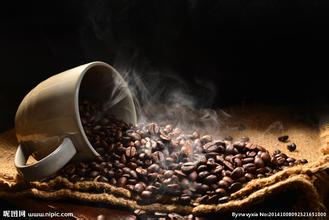Introduction to the Flavor description treatment of Yunnan Tieka Coffee Bean
Introduction of Yunnan Coffee Bean
The quality of coffee depends on many factors, such as growing environment, climate, cultivation and management techniques and so on. Its excellent growth environment is low latitude, high altitude, sufficient rainfall and suitable sunshine, so the north latitude is 15. The ideal growing area for coffee is between the Tropic of Cancer and the Tropic of Cancer. Our planting base in Yunnan is located in 23 ℃ north latitude and 99 ℃ east longitude, with an elevation of 1230 meters, a height of 1540 meters, a height difference of 310 meters, a topography of mountains and slopes, and a large undulation, fertile soil, sufficient sunshine, rich rainfall and large temperature difference between day and night, these unique natural conditions have formed the special taste of Yunnan coffee-thick but not bitter, fragrant but not strong, slightly fruity, and the quality is similar to Colombian small grain coffee. Coffee fresh fruit is generally picked from November to February of the following year and processed by washing and wetting. Advanced imported equipment is used in coffee processing. At present, 30% of Yunnan coffee products are supplied to the domestic market and 70% are sold abroad.
Typica: the oldest native variety in Ethiopia and southeastern Sudan. All Arabikas are derived from Tibika. The flavor is elegant, but the physique is weak, the disease resistance is poor, the fruit yield is less. Excellent manor beans such as the Blue Mountains of Jamaica, Manning of Sumatra and Kona of Hawaii all belong to Tibika. The top leaf of Tibika is red and bronze, which is called red top coffee. Tibika belongs to Arabica.
For coffee lovers, fine coffee really opens a window that is very different from traditional coffee. As the author Taguchi said in this article, the concept of fine coffee comes from the statutory production area system (AOC) in which wine has been practiced for many years. High-grade M3 wine comes from carefully planted grapes and carefully cultivated grapes. The same is true of fine coffee, such as microclimate, altitude, soil, drainage and even shelter in the planting area. We all see the growth and results of coffee. How can coffee peaches be harvested when they enter the harvest season? Is it manual collection or machine collection? What kind of treatment will be used after collection? Do you want to stick to the flesh or not? How long does it take to ferment? Every environment examines the owners of coffee bars, and these Know How are also important to why these coffees are considered high-quality products, and they must have something to do with their high quality, and these are all things that Taiwanese coffee growers who are on fire need to understand.
Taguchi is worthy of the reputation of the Japanese coffee industry. the explanation of this product, the planting environment, and the type of baking of various processing methods are even more in-depth and have a higher reference value than the last Coffee Collection. Individuals think that the most popular part of coffee lovers is the roasted coffee. This process of converting raw coffee beans into ripe beans is the process that we are most involved in. It is also the most important environmental tin card for coffee to show the most delicious taste. The iron card is mostly found in Jamaica in Central America and Indonesia Island in Asia. Its fruit is usually large and oval, while the leaves are relatively slender. Like to grow in fertile mountain soil, cold resistance and disease resistance are weak, the yield is low. The famous Jamaican Blue Mountain Coffee belongs to this variety.
In Peru, Bolivia and Colombia, tin cards are often called Criolla (Spanish: Creole)

Important Notice :
前街咖啡 FrontStreet Coffee has moved to new addredd:
FrontStreet Coffee Address: 315,Donghua East Road,GuangZhou
Tel:020 38364473
- Prev

Introduction to the quality and taste of geisha coffee flavor description method in Panamanian jadeite manor
With the invincible aura of invincible and invincible, the geisha of the Emerald Manor has become a dream product of the coffee industry. Its flower fragrance is like fireworks, constantly blooming in the mouth in the process of drinking, with juice like lemon, citrus and strawberry, making it like juice rather than coffee. A geisha coffee fan once said: what kind of coffee can be draped like a geisha?
- Next

Manderin coffee beans in Indonesia how to describe the taste and flavor of the manor region
The brewing method of Mantenin Coffee introduces the lively factor in the mild fragrance of Mantenin Coffee, which captivates many suitors with its outstanding taste. In the 17th century, the Dutch introduced Arabica seedlings to Ceylon (present-day Sri Lanka) and Indonesia. In 1877, a large-scale disaster hit the Indonesian islands, and coffee rust destroyed almost all coffee trees.
Related
- Detailed explanation of Jadeite planting Land in Panamanian Jadeite Manor introduction to the grading system of Jadeite competitive bidding, Red bid, Green bid and Rose Summer
- Story of Coffee planting in Brenka region of Costa Rica Stonehenge Manor anaerobic heavy honey treatment of flavor mouth
- What's on the barrel of Blue Mountain Coffee beans?
- Can American coffee also pull flowers? How to use hot American style to pull out a good-looking pattern?
- Can you make a cold extract with coffee beans? What is the right proportion for cold-extracted coffee formula?
- Indonesian PWN Gold Mandrine Coffee Origin Features Flavor How to Chong? Mandolin coffee is American.
- A brief introduction to the flavor characteristics of Brazilian yellow bourbon coffee beans
- What is the effect of different water quality on the flavor of cold-extracted coffee? What kind of water is best for brewing coffee?
- Why do you think of Rose Summer whenever you mention Panamanian coffee?
- Introduction to the characteristics of authentic blue mountain coffee bean producing areas? What is the CIB Coffee Authority in Jamaica?

